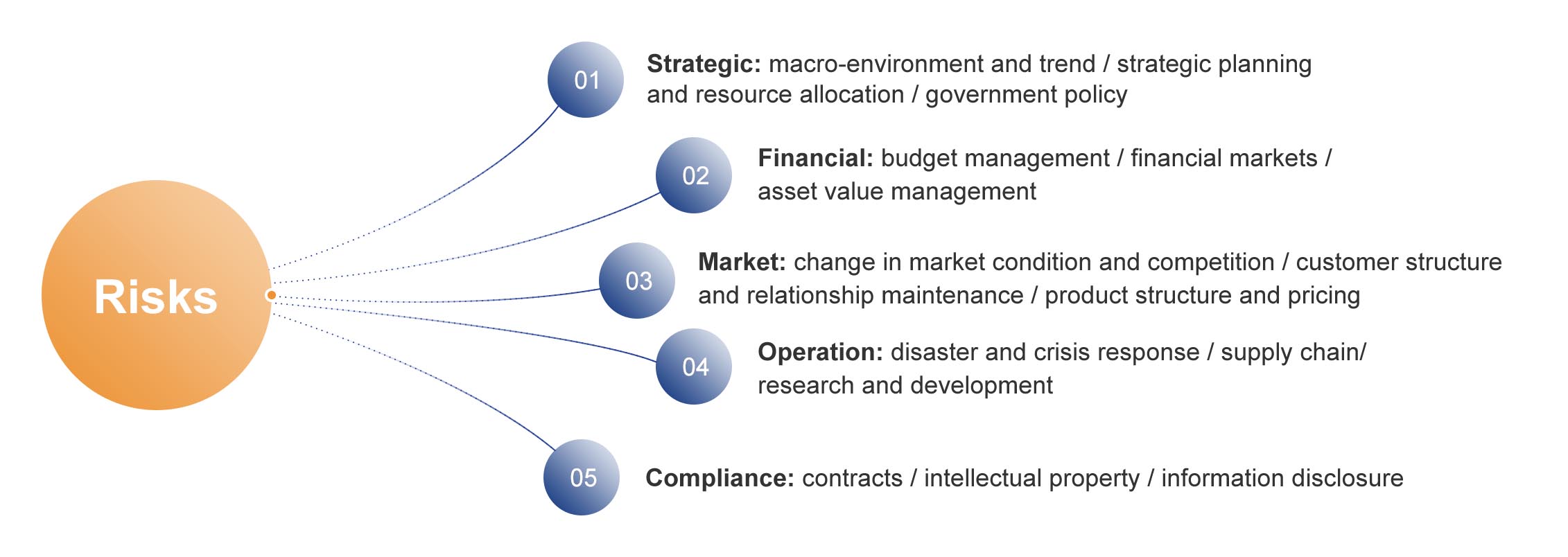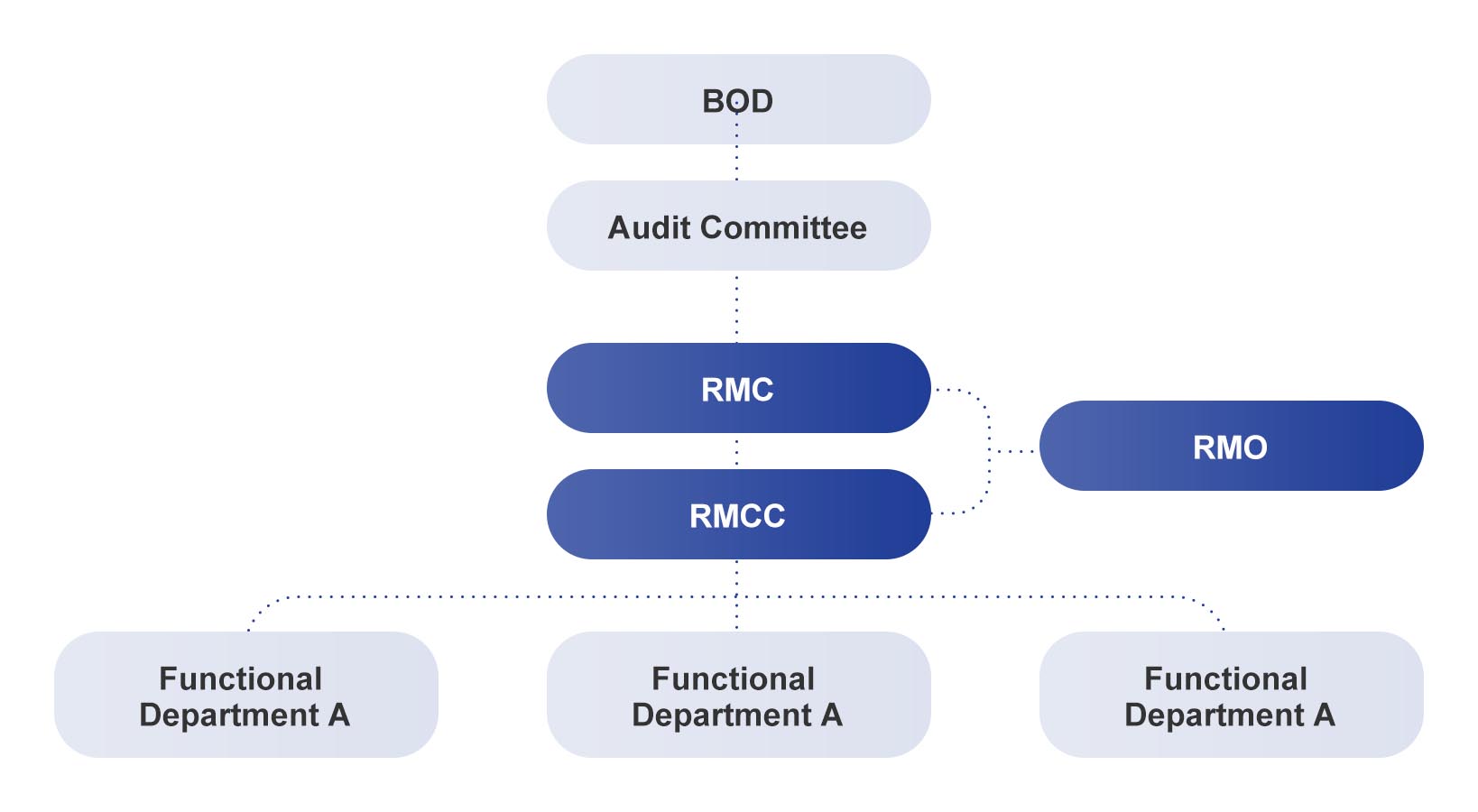
リスク管理
リスク管理
SMIC believes:
● Effectively managing risk is necessary for creating value for all our stakeholders
● All members of management and all employees share the responsibility for mitigating the risks the organization faces in its pursuit of business success
To this end, the company has instituted:
A process for risk identification, assessment, mitigation, monitoring, and improvement
Framework for risks to be communicated with management and employees
Regular review of the management status of key risks and provision of guidance by the Risk Management Committee, which consists of members of top management
Risk assessment and communication by the Risk Management Communication Committee, which consist of representatives from all functional departments
A Business Continuity Management System (BCMS)
-
Scope of Risks
SMIC created a risk library that included risks from five categories: strategic, financial, market, operation, and compliance. The diagram below provides some samples for further clarification on the types of issues evaluated.

-
Risk Management Committee
Managing SMIC’s complex overall risk landscape are the Risk Management Committee (RMC) and the Risk Management Communication Committee (RMCC), with support from the Risk Management Office (RMO). The chairman of the RMC regularly reports to the head of the Audit Committee of the Board of Directors. The duties of the RMC and RMCC are as follows:
RMC:
● Keeps a close eye on the uncertainties in the company’s internal and external environment and assesses their potential impact on stakeholders
● Takes a dynamic approach to identify major risks, develops targeted response strategies, and guides the RMCC to carry out risk management activities to achieve effective control of risksRMCC:
● Conducts annual risk assessments, updates potentially significant risks, improves the corporate risk database
● Makes timely adjustments in response strategies
-
Business Continuity Management System
To ensure business resiliency, SMIC has set in place a management system for business continuation in the face of crisis. SMIC makes preparations against potential disruptions based on analysis of internal and external risks in order to minimize the likelihood of their occurrence and/or their impact. When an incident occurs, the company will follow pre-planned responses and will also maintain open communication with all stakeholders. These recovery plans are documented, reviewed (using a multidisciplinary team), updated as needed, and periodically tested. Together these actions ensure production is minimally affected and fully restored as soon as possible.







